Author: Marshall Schott
Homebrewers have a knack for worrying about seemingly petty details with arguments for or against a certain practice often based on reasonable, albeit naive, self-invented theories. A few months back, I was chatting with a dude about an IPA he’d recently made and shared with me, while discussing his process he mentioned using a fine mesh bag to filter his kettles hops. Having just met this guy, I presumed this step was employed in order to avoid clogging a counterflow chiller, but then he mentioned chilling his wort using an immersion chiller. When I asked him why he filtered his hops, he informed me a sense of certainty that not doing so results in more hop matter making it to the fermentor, which ultimately leads to grassy off-flavors in the finished beer.
I used to filter my hops too, the main reason being it’s what the directions on the kits I bought said to do. There must be some good reason, right? As I began brewing more often, the ritualistic cleaning of the bags became annoying, so I hit the web in search of justification for this practice and found, well, not very much, either presumptive statements of fact based on anecdotal evidence, usually with the intent of selling an idea or product, or allusions to the potential impact filtering hops might have on utilization. Even today, I could find nothing demonstrating a legitimate effect of sacking one’s hops during the boil.
I began tossing loose hops directly into the kettle about 4 years ago and never looked back, as this change seemed to have absolutely zero impact on the quality of my beers. However, I remained curious if hop filtration created an appreciable difference and decided to test it out for myself.
| PURPOSE |
To investigate the differences between two beers of the same recipe where one had hops filtered during the boil while hops were added directly to the wort in the other.
| METHODS |
I’d recently picked up a fresh pack of WLP002 English Ale Yeast and, desiring a simple yet tasty beer, decided to make a slightly adapted version of a popular Pale Ale out of Oregon.
Pirror Mond Pale Ale
Recipe Details
| Batch Size | Boil Time | IBU | SRM | Est. OG | Est. FG | ABV |
|---|---|---|---|---|---|---|
| 5.5 gal | 60 min | 43.8 IBUs | 7.7 SRM | 1.053 | 1.014 | 5.1 % |
| Actuals | 1.053 | 1.013 | 5.2 % | |||
Fermentables
| Name | Amount | % |
|---|---|---|
| Brewer's Malt, 2-Row, Premium (Great Western) | 10.375 lbs | 91.21 |
| Caramel/Crystal Malt - 60L | 12 oz | 6.59 |
| Cara-Pils/Dextrine | 4 oz | 2.2 |
Hops
| Name | Amount | Time | Use | Form | Alpha % |
|---|---|---|---|---|---|
| Cascade | 15 g | 60 min | Boil | Pellet | 9.3 |
| Cascade | 20 g | 30 min | Boil | Pellet | 9.3 |
| Cascade | 20 g | 5 min | Boil | Pellet | 9.3 |
| Centennial | 25 g | 10 min | Aroma | Pellet | 9.9 |
Yeast
| Name | Lab | Attenuation | Temperature |
|---|---|---|---|
| English Ale (WLP002) | White Labs | 67% | 65°F - 68°F |
Download
| Download this recipe's BeerXML file |
I got the starter spinning about 36 hours before brewing.
Since the variable would be introduced during the boil, I decided to evenly split the sweet wort post-mash to ensure the most equal treatment possible. Because of this, I chose to use a standard 10 gallon batch sparge method for this xBmt, collecting the liquor and milling the grains the night before brewing.
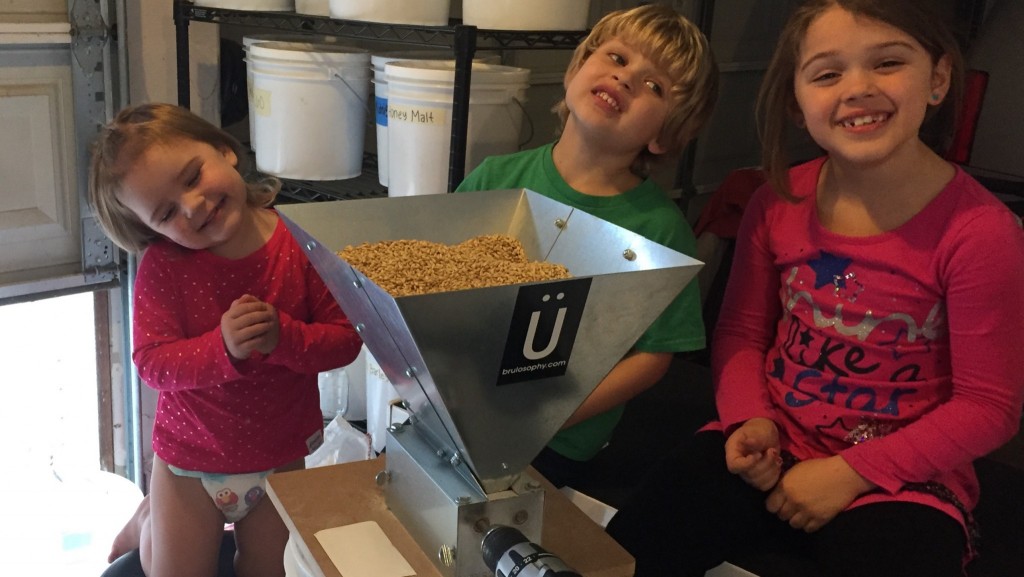
The following morning, I hit the flame under the strike water kettle and was all mashed in about 15 minutes later, precisely hitting my target mash temp.
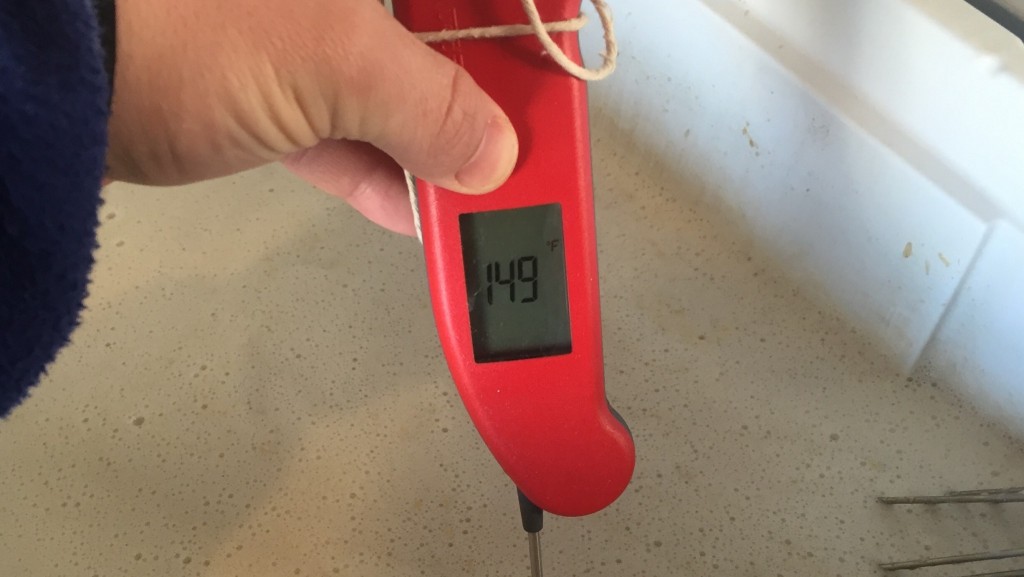
After about 45 minutes and a couple stirs, I began collecting the first runnings of sweet wort.
After a quick batch sparge, I added the second runnings to the kettle, stirred very well to ensure homogeneity, then split the wort equally between 2 kettles.
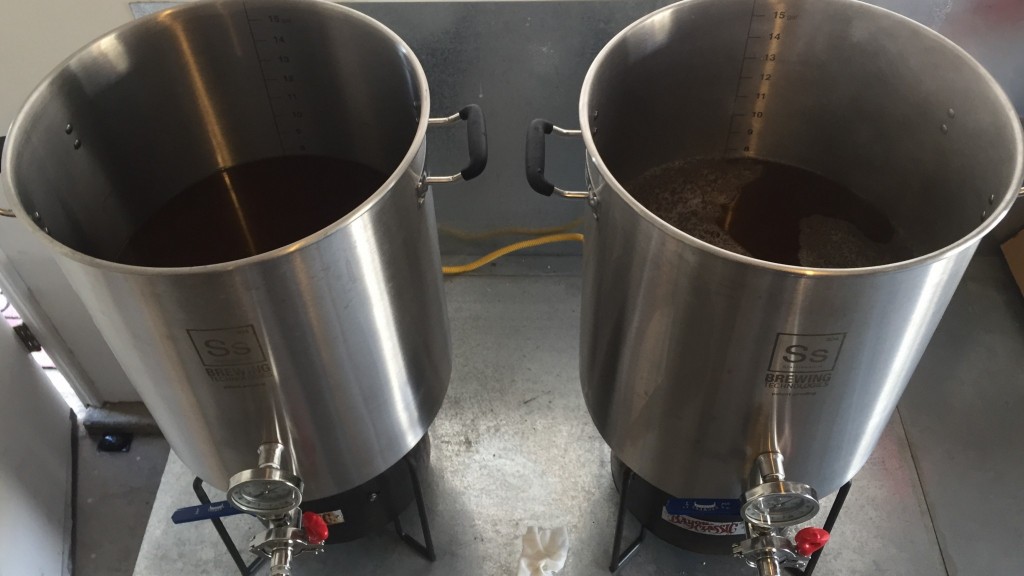
I staggered the start of the boils by approximately 10 minutes in order to make chilling easier. The same exact amount of kettle hops were added to both batches according to the recipe.
At the conclusion of the 60 minute boil, I quickly chilled each wort to 74˚F/23˚C then transferred the same amount to 6 gallon PET carboys that were placed in a temperature regulated chamber to finish chilling to my 66˚F/19˚C target fermentation temperature.
Then I cleaned up. It was interesting to see just how much hop matter didn’t make it into the bagged hops batch. Would it have an impact on the final character of the beer?
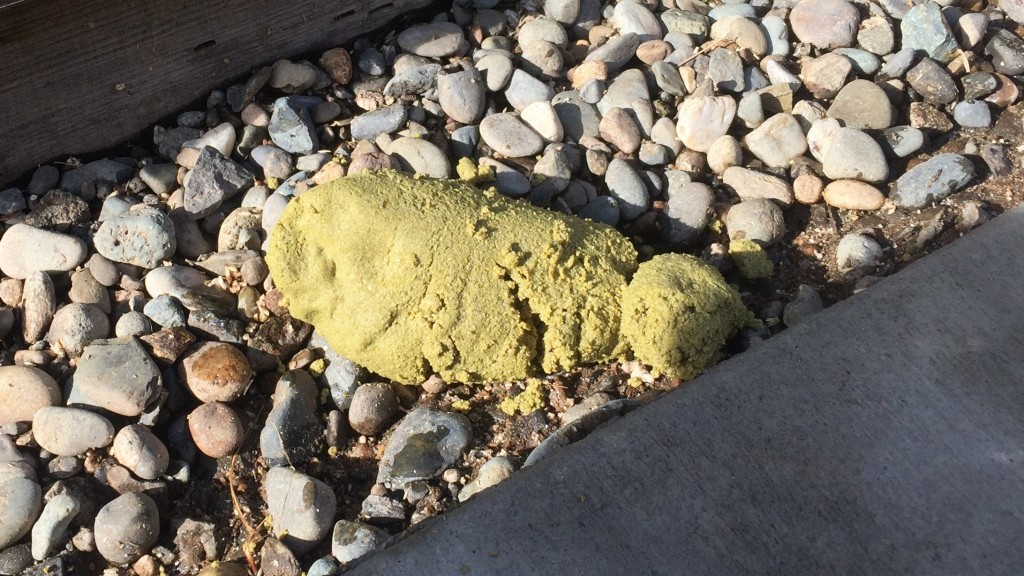
About 3 hours later, I returned to pitch the yeast, evenly splitting it between the batches.
Fermentation was visibly the same for both beer with both finishing at identical 1.013 FG, putting this right at 5.2% ABV.

A hydrometer measurement confirmed The Beer Bug reading, which is always nice. I proceeded to cold crash overnight, fine with gelatin, then keg the beers the following day.
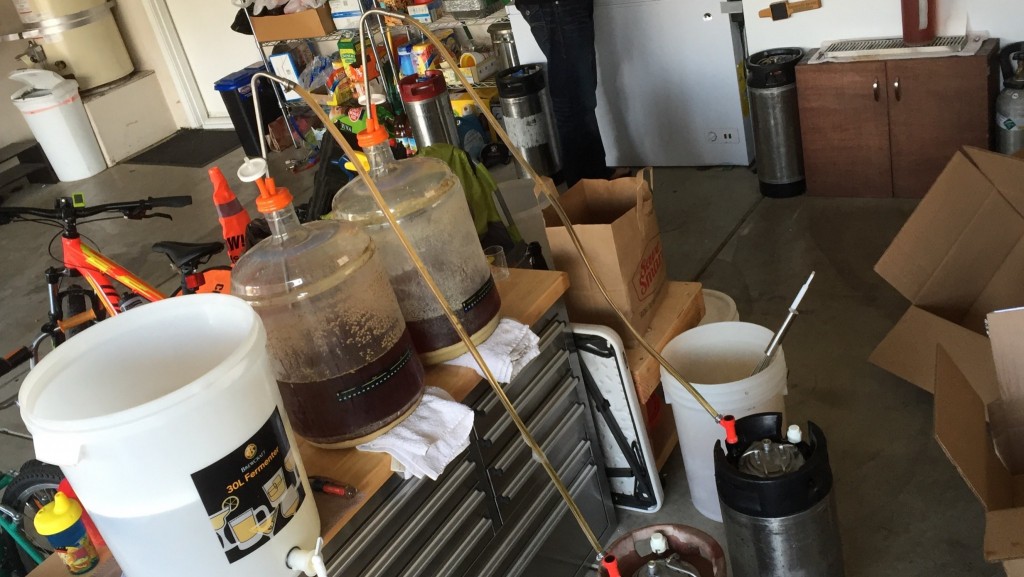
After a day at 45 psi in my cool keezer, the beers were well carbonated and clearing up nicely. I waited another few days before beginning data collection.
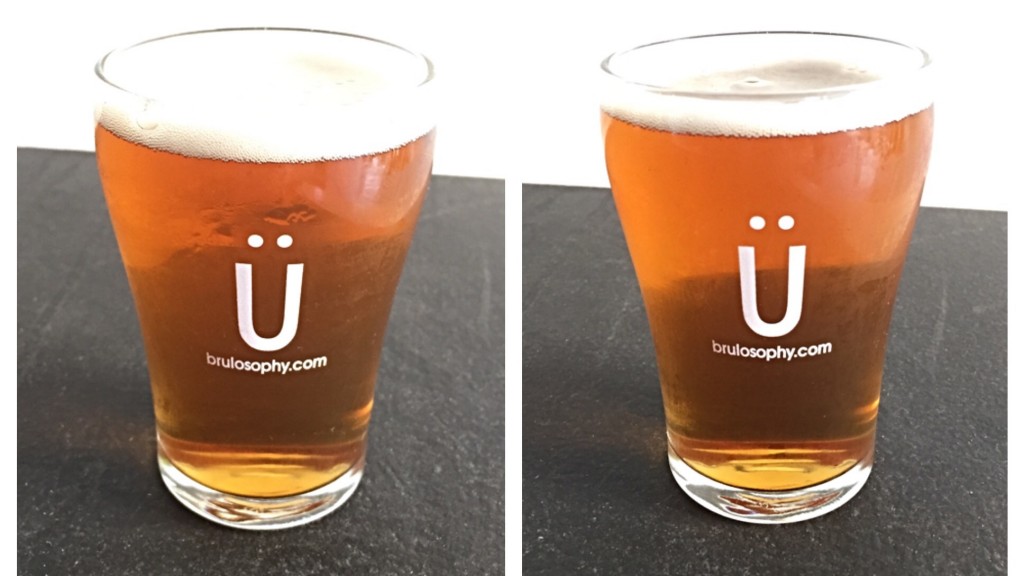
| RESULTS |
A total of 26 BJCP judges, experienced homebrewers, and craft beer enthusiasts participated in this xBmt, each blindly served 1 sample of the loose hop beer and 2 samples of the bagged hop beer in opaque cups then asked to identify the one that was different. At this sample size, 14 accurate selections (p<0.05) would be required to imply statistical significance, which is exactly the number who identified the unique sample (p=0.025), suggesting participants were able to reliably distinguish between a beer made with hops added loose in the kettle from one where the boil hops were bagged.
A brief comparative evaluation of only the two different beers was then completed by the 14 tasters who were correct on the triangle test. Regarding preference, 7 tasters reported liking the loose hop sample more than the bagged hop sample, which 4 thought was better. Two tasters noted the beers as being different but had not preference, while 1 taster perceived no difference. When asked to choose the beer they thought had the hops added loose, 10 of the 14 made the accurate selection, a pretty staggering amount relative to other xBmts.
LAB ANALYSIS
Curious if the claim that hop sacks somehow attract bitterness might help explain the perceived differences between these beers, I sent a couple samples off to Oregon Brew Lab for IBU testing, this time making sure to do it right. In less than a week, I received an email with the subject line indicating the results were ready. Other nerds of my ilk can likely relate with the excitement such an email incites. I opened the attached PDF admittedly expecting to have my hunch confirmed.
Bagged Hops During Boil
Loose Hops During Boil
While in the expected direction, the difference of 2 IBU certainly wasn’t enough to convince me level of bitterness was responsible for the perceptual differences between the beers. Moreover, the measured IBU was over 20 points lower than the IBU predicted by BeerSmith, and these were fresh 2015 crop hops. I’m intrigued and confused.
My Impressions: My personal belief going into this xBmt was that hop filtration during the boil has no qualitative impact on beer, and because of this, confirmation bias could easily have influenced my inability to detect a difference. Except I was able to identify the unique beer in all of the 6 “blind” triangle tests I took. The differences couldn’t have been more subtle, I likely would have thought I was drinking the same beer if served a pint one after the other, they were that similar. However, when intently focusing on the differences, I perceived the bagged hop beer as being less bitter with a more rounded malt flavor, while the the loose hop beer came across as possessing a minimally sharper bitter character that balanced the maltiness a tiny bit more. Given my accuracy on the triangle tests and my ability to identify each beer, it’s totally likely my personal preference is driven more by how I brew than what I actually like more, let’s just say I don’t plan to re-integrate the use of hop bags in my process.
The beer was actually pretty good, though I think it would have been better had I done the dry hop additions per the clone recipe. Regardless, I bought a relatively fresh sixer of Deschutes Mirror Pond Pale Ale that I had a few friends blindly compare to my version. They all thought my Pirror Mond was more flavorful and generally preferred it to the original, with one person commenting that Mirror Pond had more of a mineral and slightly metallic character when sampled next to mine. Not a single person ever noted a grassy flavor or aroma in either of the beers.
| DISCUSSION |
The idea of an IBU sensitivity threshold has been a topic that’s been discussed by brewers for awhile, some claiming a difference of up to 5 IBU as being unnoticeable while others have proposed a non-linear relationship based on percentages. The fact lab data showed the bagged hop beer to be only 2 IBU (8%) less than the loose hop beer makes the results of this xBmt all the more interesting to me, mostly because I have a very difficult time accepting that this seemingly tiny discrepancy is responsible for differences between the batches. Even accounting for the margin of error leaves us with a difference of just 4, still less than what most people to think would produce a noticeable effect. And yet, a large enough portion of participants were indeed capable of telling the beers apart. Could it be some other factor of using a nylon bag had an impact? I’m certainly no textiles expert, but I’m left wondering if perhaps something about the nylon played a role in the flavor of the bagged beer and if the results would be similar using a stainless kettle hop filter.
Even though these results suggest using a nylon bag has some sort of appreciable effect on beer compared to adding hops loose in the kettle, it’s certainly not drastic enough for me to recommend people change their process, particularly if such filtration is necessary due to chiller type or some other post-boil process. On the other hand, folks looking to simplify their brew day use immersion chillers likely have little to worry about should they decide to ditch the sack.
If you have any thoughts on this xBmt, please share them in the comments section below!
Support Brülosophy In Style!
All designs are available in various colors and sizes on Amazon!
Follow Brülosophy on:
FACEBOOK | TWITTER | INSTAGRAM
If you enjoy this stuff and feel compelled to support Brulosophy.com, please check out the Support Us page for details on how you can very easily do so. Thanks!

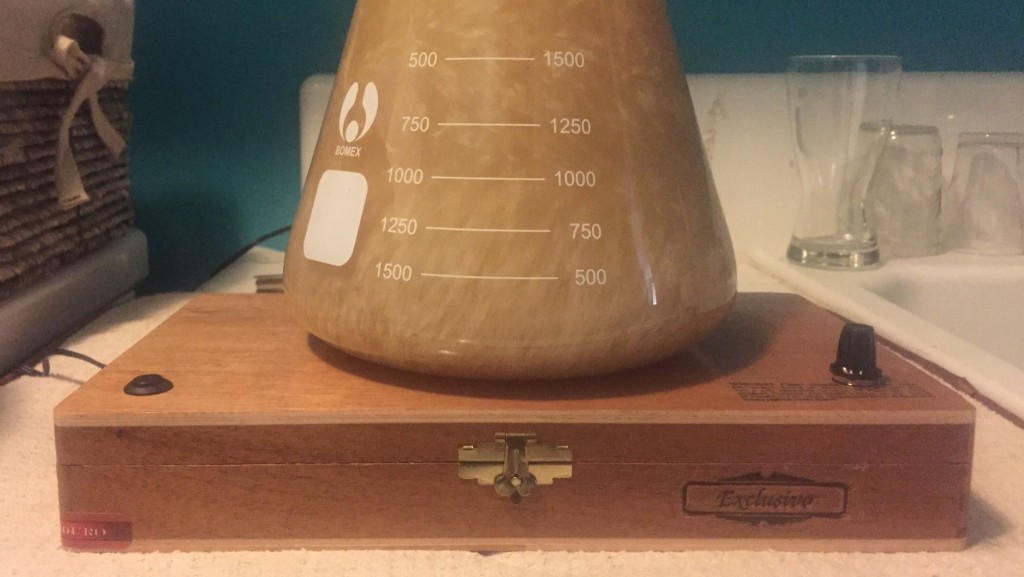
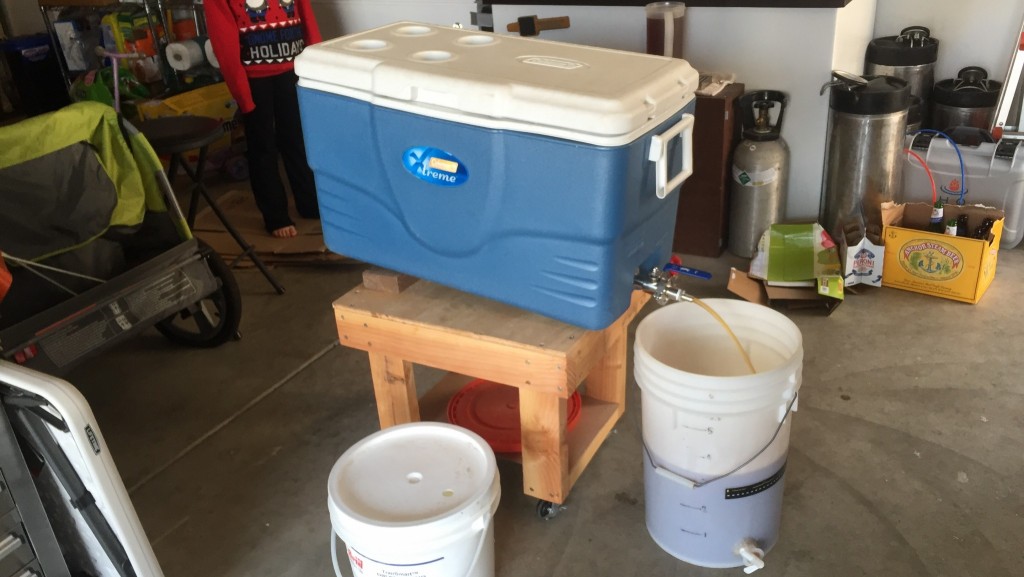
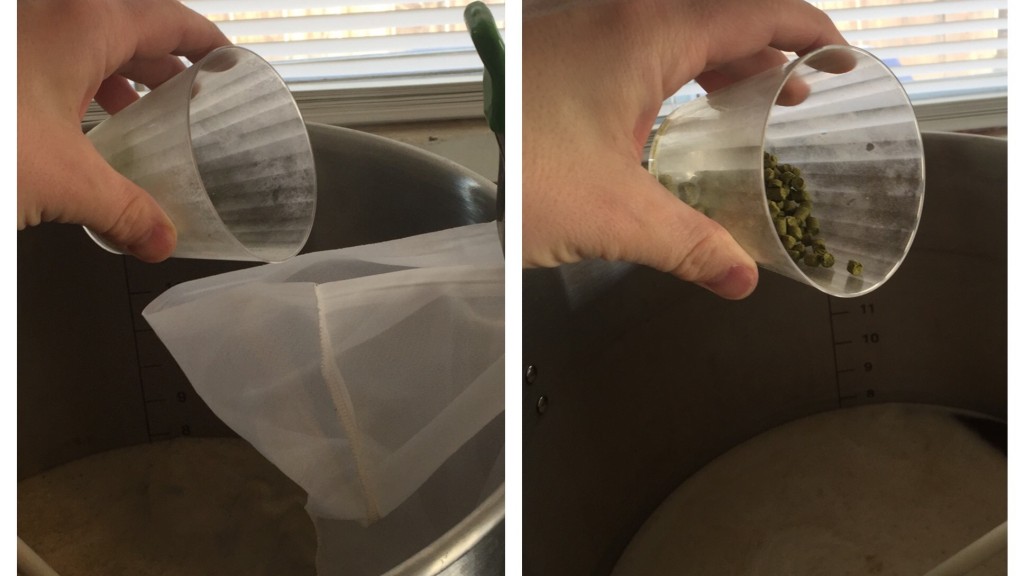
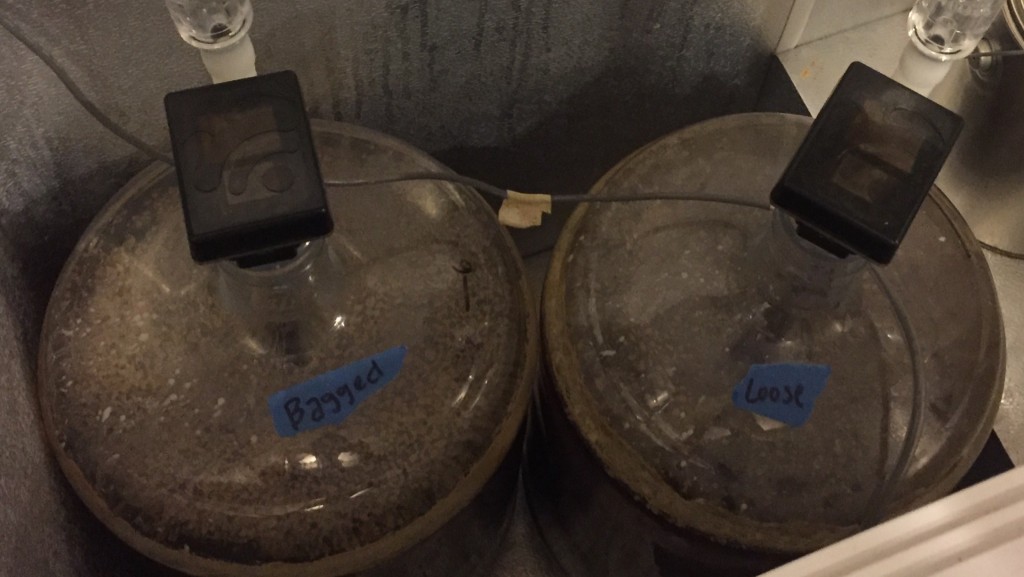













108 thoughts on “exBEERiment | Kettle Hops: Loose vs. Bagged In An American Pale Ale”
Do you transfer the entire contents of your kettle to your fermenter (hop sludge and all), or do you siphon to leave trub behind?
I wanted to know this too.
Not intentionally, I just don’t worry much about it. I do end up leaving maybe 3 quarts of trub and wort in the kettle.
I use a Grainfather system and pump only the sweet wort into the fermenter. I’ve never seen anyone transfer the trub into the fermenter but it might be a good exBeerIment.
They already did that experiment and no significant difference.
Unless I missed it, you didn’t mention fining with gelatin, which I’m assuming you did since you almost always do. Any differences in clarity between the two?
Last paragraph before Results section. Definitely used gelatin!
Does fining with gelatin contribute to the 20 pt difference in IBU’s compared to beersmith calc. ?
Don’t know, but the fact people were unable to distinguish a beer fined with gelatin from one that wasn’t seems to suggest otherwise.
My only theory for using hop bags is to keep hop matter out of the yeast cake for reuse of the yeast. It may be too late too attempt this, but I would love to see a follow up testing the yeast cakes against each other.
Same here, minimizing trub so I can easily save/repitch the yeast cake is my main reason for bagging hops when I’m using more than just a basic bittering addition.
When doing very small experimental batches I also bag, as a 1-gal carboy doesn’t have much headspace and I want to maximize the 10 bottles I get while preventing blow-off.
I’ve actually compared “sloppy slurry” to fresh yeast a couple times, no difference noted. Here’s a link to the first xBmt:
https://brulosophy.com/2015/03/02/sloppy-slurry-vs-clean-starter-exbeeriment-results/
Man, these experiments are getting EXHAUSTING. The words ‘no difference noted’ haunt my every thought.
I know this has been suggested before, but do you have plans of combining a few common, beginner’s ‘sloppy practices’ with a few corresponding ‘best practices’ and then let those beers loose to your panel of testers?
It just seems that almost every time you isolate just one factor, no statistical significance is reached in the tasting panel in any meaningful way.
We definitely have some short & shoddy vs. good practices xBmts on the list!
I use a strainer so hop matter doesn’t make it to my fermenter.
Very nice write-up. I’ve used hop bags in the past, but only a few times during the boil. I usually used them for dry hopping, but recently stopped using them and it seemed like that really improved the dry hop character. I do use a stainless steel hop spider in the boil kettle as I chill with a plate chiller and I do a whirlpool re-circulation through it. I haven’t done any scientific analysis, but it didn’t seem to me that there was any difference between using the spider and not using the spider. That’d be an interesting one, to see if there was a difference between bagging them in nylon versus a stainless hop spider.
Im more interested in the huge discrepancy bw the Beer Smith IBU calculation and the actual IBU value. I understand we use formulas to estimate IBUs and the math isn’t perfect, but I was under the assumption that we were getting somewhat close (maybe +/- 8 points).
I think it can vary a lot depending on the equation, the acidity of the wort and the intensity of the boil. I’ve done 2 or 3 IBU tests on my old setup and have found that it was almost dead on using the Rager formula with pellet hops and a moderately vigorous boil of 6 gallons in a 15 gallon aluminum pot on a turkey fryer.
By the numbers 2 IBU’s don’t seem like alot, but when realized as an 8% difference, it seems like a noticeable difference. An 8% change in any one ingredient would be a noticeable factor i would think.
Also, why do you think beersmith was so far off?
I really have no clue.
what formula do you use for ibu calcs? try some others and see if they are closer. also, there can be big differences in utilization depending on if it say 16 minutes or 15 minutes, not as big as you see, but it can change quite a bit. i don’t think it is a strictly linear calcuation if I am remembering correctly
+1 for the “Rager or Tinseth” question.
You might this interesting. I compared the 3 different IBU formulas in BeerSmith on this recipe and came up with the following:
Tinseth: 39 IBU
Rager: 42.9 IBU
Garetz: 23.6
I’ve heard Tinseth was typically more accurate to real-world IBU figures than Rager, but had not heard about Garetz…looks like Garetz was the closest there!
So just changed a few of my recent batches to Garetz and it dropped a 70 IBU IPA to 26 IBU. That can’t possibly be right…
Be careful. There’s some speculation that certain IBU formulas are calculating the bitterness of the pre-fermented wort, while it appears others, potentially Garetz, predicts the bitterness in actual beer. I’ve not had the time to research this, but I wouldn’t recommend using the Garetz formula without serious consideration.
lol, wasn’t planning on it, per se!
Interesting, I did not know that…good info! I have heard that tinseth is closer to actual overall, so I’ve used that in my own brewing. Found this article from zymurgy a few years back that identifies tinseth and daniels (single data point, of course) as the closest to a lab calc for a single beer tested. But now we have your data point too…and (https://www.homebrewersassociation.org/attachments/0000/2501/IBUs.pdf)
Well this is a can of worms for testing if I ever saw one…
Thanks for the article Marshall! If you’re ever in Phx come visit the ASH folk eh?
Hey Marshall, I’ve pondered on this topic myself quite a bit, and was thinking to truly compare loose versus bagged you would also have to filter your loose kettle hops during transfer to the fermenter, no? This way the exposure time during boil and transfer is the same for both, otherwise the loose hops beer has a bunch of hop matter also transferred to the fermenter, giving this beer a much longer exposure to the hop matter. Any thoughts on that?
Good call, perhaps for the next iteration I’ll do that.
I was going to ask if you pulled the hop bag before the chill, which might have given the loose hop batch a bit more hop exposure.
Good question. I left the bag in the entire time, removing it after transferring to the carboy while cleaning the kettle.
In your test hop amounts of 15, 20, and 25g were used. To you believe that the results would hold of larger amounts were used? Amounts of 50g or 90g per hop bag?
My hunch is they’d hold up, but only more experimentation will tell!
Man if I didn’t use a hop bag for my BIAB batches I would probably have a gallon of trub as opposed to 1/2 gallon. Especially on IPAs that usually boil at least 5 ounces of hops.
I like that stand you’ve got built for your cooler mash tun. I stick a 2×4 under one side of my rectangular cooler like yours but it’s not as pretty.
Thanks!
Wow, that IBU difference… you should address this in a future exbeeriment!
Any ideas?
I don’t know :B
Depending on the cost of each IBU test, I would check the IBUs of any beer produced in an Xbeeriment and then I would compare the expected IBU vs the real number.
That might give you a lead to the cause of this discrepancy… since each Xbeeriment is documented for us online beer nerds, it might be a good way to get some clues.
But again, I don’t know…
i would try checking your boil pH from now on and also doing an exbeeriment with boil intensity to see if there is a noticeable ibu difference.
You might want to check out this thread with regard to why the calculated IBU’ s were so out:
http://forum.craftbrewing.org.uk/viewtopic.php?f=62&t=8737
Graham Wheeler (who wrote several of the books British books on homebrewing, including ones “for” CAMRA) and “Aleman” (a well regarded brewer) chime in with some very interesting discussion part way through that pretty much rip apart the accuracy of any of the current calculations and even discuss whether it might just be better to use some kind of fixed utilisation method instead.
When tasting the beer, after the initial triangle test if a participant perceives no difference between the two beers, shouldn’t you discount that participant from the correct answers? Obviously their choice in the triangle test was random, and they just got lucky in choosing the correct sample.
Anyways, it’s a good read, as always. Keep up the good work! Cheers!
The subsequent data from those who don’t get the triangle correct is ignored 🙂
I meant those who get the triangle test correct, but when comparing only the two samples note that they don’t perceive any difference.
I have felt like I have gotten more hop character by leaving the hops in the wort to fermenter but never did a side by side. I am curious about the bog descrepancy of the calculated vs actual IBU level. How about one beer with a single 60 minute hop addition for a given calculated IBU. Then an identical batch with a single 15 minute addition for the same calculated IBU level. Then compare the analyzed IBU as well as a triangle test. “They” say late hop additions give a smoother bitterness at the same calculated IBU but perhaps it simply produces less bitterness.
Big not bog
I how expensive it was to send the beer off for analysis, but the fact that it came back 20 ibu lower than BeerSmith was very interesting, and it would be great to see an experiment on that in the future! I hope you consider that.
Bag vs Loose was interesting too, because I have been throwing the hops in loose, but have considered using a bag to help clean up the beer that I throw in the fermenter a little. It is nice to know that it wouldn’t destroy my utilization, but it sucks that it noticeably affects the taste. I will have to do it the next batch just to see for myself.
Definitely will consider it!
As usual, the results are not always what I would expect. I don’t usually use a hop bag – I find it a real pain to clean. I would be interested in seeing the lab results of an IPA or DIPA using this same method and how far off the IBUs were.
“Homebrewers have knack for worrying about seemingly petty details with arguments for or against a certain practice often based on reasonable, albeit naive, self-invented theories.”
I don’t know if a more true statement has ever been said!
I have a question about the results, and it’s something that I have seen in a couple other of your exbeeriments. After the triangle test, you survey the folks who made the correct choice. Then you say “1 taster perceived no difference.” Did that person just have a lucky guess then?
Could be. There’s a 33.3% chance people will select the correct sample randomly.
i bet you won’t see a big difference using a stainless hop ball but i’ll wager you would see a difference using a muslin or other natural fiber sack. cheers.
Oh, and that hop log will kill a dog if it eats it. namaste.
It was immediately washed into my French drain.
Did you squeeze the hop bag after the boil? Maybe here’s your 2 IBU difference?
Not terribly hard, but a little bit.
I have the same question as pride – on the loose hops version did all that hop matter get transferred to the fermenter?
My main comment is that I thought it was fairly accepted in the brewing community that throwing hops loose into the boil gets more utilization out of them than in a bag. My assumption is that wouldn’t only affect bitterness, but also flavor and aroma compounds, which wouldn’t show up on a lab IBU test but would affect the flavor of the beer. Right?
Imagine making tea – doesn’t it make sense that if you were to stir loose tea around in hot water that you would make stronger tea than steeping a teabag?
Love this site and your experiments. Keep it up.
I did an experiment on extraction of caffeine into hot water using tea bags one time. i did not compare the tea bags with loose tea, but i did compare different steep times from like 30 seconds to 5 minutes. i found that the caffeine extraction into the water did not increase as much as you would expect for longer steeps. Either the amount of caffeine extracted was overall less in the bags than in loose tea or the tea loses its caffeine to the water much better than you’d expect. i assumed that the tea was losing its caffeine to the water effectively, as a long steep should be better than a short one. i didn’t really follow up on the experiment though. my point is that it is possible that the bitterness is extracted better than we think in a hop bag.
Totally.
Caffeine is one of the more soluble compounds in tea and coffee, and it extracts very quickly. 30s in a French press is long enough to get all of the caffeine out of coarse ground coffee.
But it’s usual to steep coarse ground coffee for 6 minutes or so in a French press, and loose whole leaf tea for 4-6 minutes, to get the other less soluble flavor compounds out.
Particle size matters as well in the rate of extraction – fine ground espresso coffee and tea bags made with fannings and dust don’t need nearly as long a steep. (C.F. mash grain crush size.)
An experiment comparing tested IBUs at different boil rates would be interesting and maybe account for the low numbers in this xbeeriment. How vigorous was the boil?
No more paint strainer bags for me!
I’ve been waiting to get this on another large website…
#hopsgocommando
😀
Marshall, I’m sure you have noticed that the perceived bitterness of an IPA is greater after it is dry hopped. There are probably all sorts of compounds, maybe mostly tannins/polyphenols, that extract more effectively when steeping in the fermenting beer as compared with the one with no hops steeping in it over the ferment. I would bet that is the source of the added perceived bitterness as opposed to isomerized alpha acids.
hello there, I love reading your aritcles, I was wondering if you transfer your beer from carboy to keg with the sterile siphon thru the pin lock QD, with the lid closed? I read your article on kegging your beer, and it looked like in those pictures, that you did it thru the open lid that way…have you changed your process? looks very interesting, I would love more details on this process, if I am correct in my assumptions that is. thanks for yet another great article.
I did change my ways… should probably update that article at some point 🙂
I would totally read that!….hint hint….
Dude awesome stuff! I’m a free hopper for life, transfer nearly all the trub and consistently get great results.
I’m making a big IPA tomorrow that calls for 5 oz of dry hopping. Will gelatin and cold crashing cause most of it to settle on the bottom of the fermentor?
That’s how it has worked for me!
Interesting results, I’d previously heard and believed (based on personal experience) that loose hops were good for about 10% more IBU’s than contained hops – theory being that containing them reduced the contact with wort and gave higher localized alpha acid concentrations, reducing efficiency. Neat to see the lab results corroborate this.
As for the lowered IBU’s, I think the calculations are good for the end of boil? I’ve read that yeast can carry away 25-33% of the IBU’s as the isomerized acids stick to them when the floculate. Since I have a sample valve on my fermentor, I’ve always noticed a decrease in bitterness once the yeast floculates. I believe one of the big breweries has done analysis and seen the same thing.
Great experiment Marshall!
I’ve always wondered if the hop bags held in some of the hoppy magic goodness, for that reason I’ve been throwing them in the kettle loose. You should do a Dry hop, bagged vs loose experiment next. I don’t bag my dry hops for the same fear of losing that extra hop punch.
Another experiment I’d love to see is some PH experiments. I’ve read recently people saying their hop intensity and character is greatly affected by small changes PH.
It’s on the list… both!
I don’t get how this does not contradict the Great Trub xBmts; aren’t the Trub xBmts just going further than just removing the hops?
I’ve done both, but prefer the laziness of loose. I do, however, filter the hop sludge through a double mesh strainer on its way into the fermenter. My theory is “less” grassy notes, but allows for “better” hop utilization in the boil.
Test that theory! 😀
Tell me more about this double mesh strainer. I have been battling “Hop Sludge Syndrome” for months and everything I’ve tried just results in a clogged spider/bag/etc filled with watery “hop soup” that refuses to strain out. I end up losing a full gallon sometimes.
Using hops in a bag, you can take them out at any time during the boil. For inspection.
I find it surprising that you tasted fresh commercial Mirror Pond next to yours and didn’t seem to notice/comment on the bitterness being significantly different–I’m sure you’d notice a 20IBU difference! My bet is the facility testing your beer gave inaccurate results…
Somehow I missed this post when it came out – sorry to be late with a comment. But the lack of any comments about a difference in bitterness in the Pirror Mond vs the commercial version really does make me wonder if the Lab analyses were correct. I think Nate is on to something.
Marshall, were the nylon bags that you used brand new, or had they been used in a boil a few times? Could that be related to the difference in flavor?
They were used, and I believe they’re made of voile… maybe that’s nylon?
I use one of these: http://www.stainlessbrewing.com/Hop-Spider-with-seam-welds_p_158.html
I use a 17″ OD kettle and the 9″ OD hop spider. I wonder if this would make a difference vs the bag since they free float a bit more in there vs the bag. As for my suggestion for an experiment, what about mash times? Two beers both mashed at 154, one for 45 minutes and one for 120 minutes.
I was also intrigued by the 20 point gap between the BeerSmith estimate of IBU and the lab results. I will need to get analysis done to fine tune my beer. Also, I use a metal mesh cylinder in my brew kettle…so it would be interesting to run this study using the metal cylinder which is much wider and allows the hops to circulate more while keeping them out of the fermenter at the end of the brew session.
Yeah, the discrepancy is interesting. Wonder…are style guideline IBU figures based on actual IBUs or the calculator estimates?
I currently use only leaf hops, no pellets. I wonder how these findings would differ, if at all, with only leaf. As a general note, I would love to see more exBeeriments using whole hops, whether they are the manipulated variable or not.
Also, I found a recipe for Pliny online direct from Vinnie at Russian River and it states “actual” IBUs at around 90, while beer Smith calculates it at ~213. This has made me wonder if I need to be upping my IBU contributions in general, to account for this sustainably and get closer to the desired result in the finished beer…
Another excellent experiment!
Marshall: On a side note, I’ve been meaning to drop a note about the Therma Pen. After breaking my 20 year old glass floating thermometer in a batch last fall, I decided to try the Therma Pen based on your review and it looking like a handy solution.
Oh dear sweet baby Jesus, it’s the best tool I’ve added to my brewing arsenal since…ever!
This may sound like a commercial or paid endorsement, but I’m just a regular home brewer and fan of the site.
Thanks for featuring it, and to everyone else who doesn’t have one yet, do yourself a favor and get one.
You may have already answered this, but did you squeeze all wort out of the the hop sack prior to t-fer into fermenter? If not, this may have been where you lost some of the IBU’s…I squeeze my hop sack out until there’s hardly a drop left in it…
I did give it a fairly decent squeeze, just enough to ensure my post-boil volumes were similar.
Hello, i’ve just read Brülosophy’s 2016 Year in Review and re-read a few of the great xBmts of 2016, including this one about loose v bagged hops.
What absolutely jumped out at me second time round is that a beer designed to have 44 IBUs (and a Bitterness Ratio of 0.83) turned out to be 26 IBUs with BU:GU of 0.49 – AND NOBODY NOTICED!
This begs a few questions about tasting, bitterness, bitterness ratio, etc. The discrepancy between actual and design is so large one would expect a few tasters, especially the BJCP judges, to comment on the beer being out of balance, possibly too malt-sweet, etc ???
THIS IS GOLD! Marshall’s honest presentation of results, especially where something unexpected pops up, might just lead to some new insight here!
Definitely calls for more xBmtation… any clever xBmt design concepts out there relating to this?
Cheers everyone,
Last day of the year, time for a beer!
AKA
Perth, Western Australia
December 31, 2016
Would you consider doing a dry hop exbeeriment: loose vs bagged?
It’s on the list!
What are your thoughts on the hop sack and whirpool additions? I would have to think dumping them into the kettle would be more effective than in a hop sack for this method? Very curious as I am about to review a trub filter. Thanks Brian
These are the exbeeriments I like to see! The triangle tests get to the “does the different ingredient/method/process make a perceptible difference” but you need the lab work to determine if there was a measurable difference to begin with.
It’s gotta be a simple matter of exposed surface area. I’ve stopped using hop socks and use a stainless mesh thingy. I’ve opened up hop sacks after finishing brewing and noticed the hops in the center were barely wet. I’ll bet there’s a limit to how many hops (1 oz or less) you can put in a sock.
I know it’s maybe a bit too specific, but I would be interested to know more about how the material of the bag or how the size of the bag, relative to the finished swollen hops, affects the perceived bitterness and aroma. I always have good results with coarse muslin bags, but because I have always done this I have tweaked my recipes accordingly. For my purposes it makes for an easier transfer to the fermenter and a faster cleanup. I still throw loose hops or pellets into the fermenter for dry hopping to minimise infection risks though.
Hi Marshall,
Another great xbmt, as always!
I have been a kettle bagger for the last few brews I’ve done. I’ve also begun siphoning my wort through paint strainer bags in my bucket as well. My main goal in going to this extent is to eliminate as much trub/hop particulate as I can before it hits my fermenter. When I started brewing I found that a 5.5 gal batch would generally net 46, 47, or 48 bottles of beer. Once I started bagging, I found that my output has been steadily around 51 or 52 bottles.
I really only drink IPAs, so my findings are based on similar recipes (as far as the amount of kettle hops and dry hops are concerned (I also bag dry hops)), but to be fair I haven’t brewed the same two recipes in differing fashions yet (i.e. one bagged, one loose), so I don’t know how the flavor profile may change, as in your xbmt above.
For me, the prospect of getting an additional six pack of beer for a little extra effort (those paint strainers are tough to wring out) is well worth it. This may change when my kegs arrive next week, though!
I love this site. Well done. If you want to test the impact of the nylon bag, you can make two beers, with loose hops in each. In one of the beers, put an empty nylon hop bag. Just a thought
I have made the same IPA recipe 6 times. The first three were free hops, while one was bagged and two were in my hop spider. The first three were significantly better balanced with a much more bitter taste.
Since then I have completed other IPA’s with similar hops and IBU’s and none have had the same bitter character the first three did.
I am making a pale ale on Sunday and am going to go back to throwing them in. Which is my preference anyway. My fear was that I would burn out my pump if my filter clogged.
Thanks for the article. Although it seems there is little difference by your test, there certainly is to the palate.
Regarding the IBU difference with Beersmith, have to contacted Brad Smith for comment on this? Also silly as it may sound, did you confirm the actual Apha % of your hops against the default in the Beersmith hops inventory?
Late to this – just listened to an archived podcast – but my guess is that this is the simple answer. Cascade pellets have historically been 4.5-7% alpha acids, and typically 5.5-6%. This would fit well with measured IBUs.
It would be interesting to redo this exbeeriment, this time increasing the kettle hops additions by 10% in the bagged-hop beer and see if the beers would be more similar in flavors and measured IBU’s.
Agreed. The lab shows an 8% difference. What brewers need to know is can they just add a bit more hops if bagging for an identical result and get on with their day.
Would using a hop sack affect the aroma of late hop additions? To squeeze or not to squeeze the sack?
Thank you